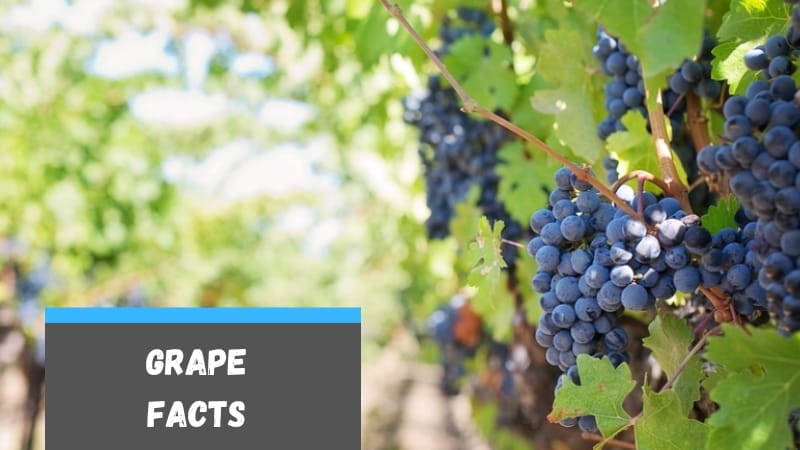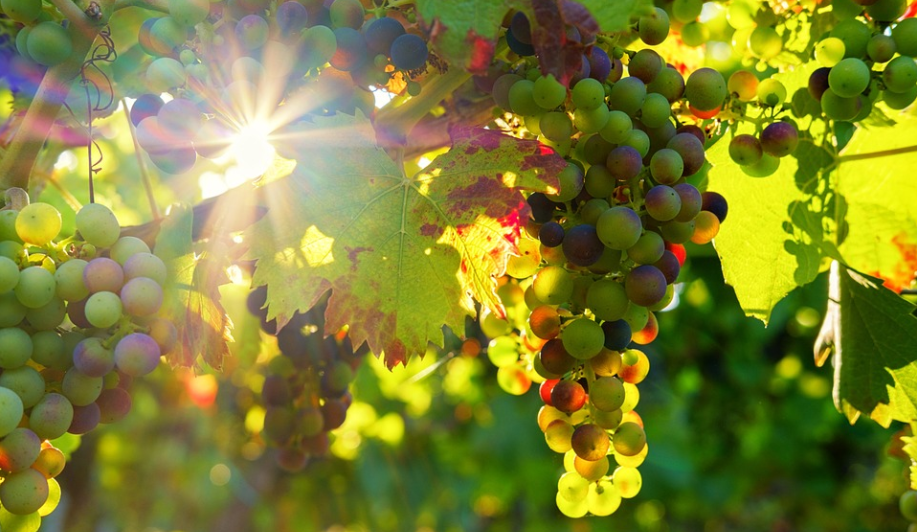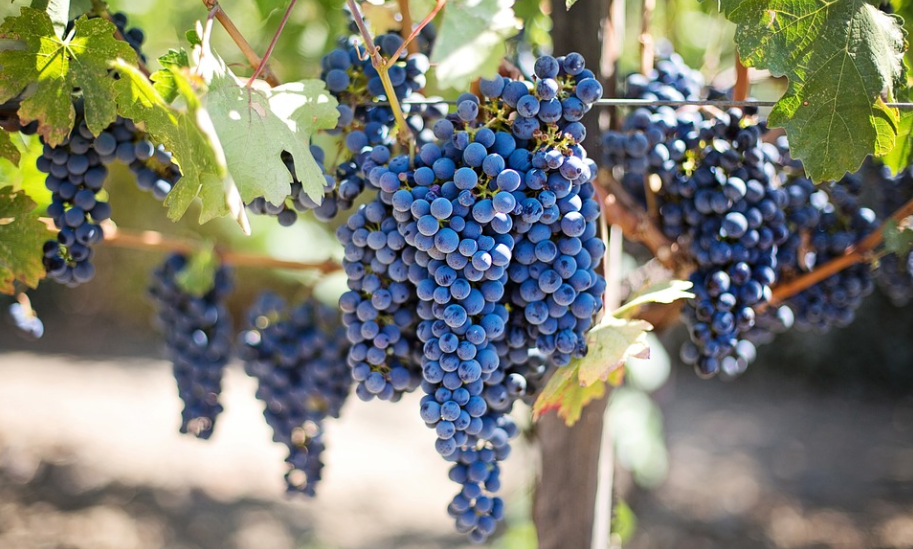
Do grapes have any beneficial properties? How many categories of grapes are there? What is the parent species of most grapes? Find out about these answers and more in these facts about grapes.
Grapes have more to offer than just their delicious flavor and beneficial properties. Grapes have a prize for centuries due to their delectable flavor, adaptability, and remarkable range of beneficial properties.
Continue reading to learn 25 facts that are highly interesting.
Grapes, regardless of their color, are berries that one can enjoy as a portable snack or used as an ingredient that is low in calories.
Red grapes, green grapes, and black grapes are all delicious options.
There are around 8,000 different kinds of grapes available all over the world. The American and European varieties are the most common ones.
Grapes are in a variety of hues, including black, white, pink, green, purple, yellow, and red.
Native North American grapes were extremely sour and typically grew wild in damp areas near streams.
The first European grapes got introduced to California by Spanish missionaries in 1769, and they planted them there.
In the following paragraphs of this post, you will find out some further interesting information on grapes.
These facts about grapes will include their place of origin, the type of plantation, the number of different varieties of grapes, and the location at which we can find them.
Facts about Grapes
1. They are borne on deciduous woody vines of the genus Vitis, which are plants that typically lose their leaves in response to the changing of the seasons.
2. Grapes are usually in two categories: those used for eating and those used to make wine. Grapes intended for consumption at the table are table grapes.
3. Table grapes are different from wine grapes by their lack of seeds, papery skin, and larger size. They contain about 15 percent of sugar by weight.
4. Grapes used for making wine have a high level of sweetness, a thick peel, and seeds and get picked when their sugar content measures 24% by weight.
5. They come in a wide spectrum of colors, from bright red to black, green to orange, and yellow to dark blue to pink.
6. Grapes that are commonly labeled “white” are actually green and evolved from their purple ancestors.
7. Vitis vinifera is the parent species of the vast majority of grapes. This European grapevine is native to regions including the Mediterranean and Central Asia.
8. You can find European grapes year-round, while American grapes are only accessible in September and October.
9. Grapes grow in bunches or clusters that might contain anything from 15 to 300 individual berries. These collections get arranged in a pyramidal fashion.
10. Around 75 berries get stored within each cluster on average.

11. Grape juice can also get produced from grapes, albeit on a much more limited scale.
12. There are many different varieties of grapes; some examples of these varieties include Cabernet Sauvignon, Merlot, Sultana, and Cabernet Franc.
13. The United States of America, Spain, France, Italy, and Turkey are the top five growers of grapes that are in the production of wine. Grape production around the world estimates at 72 million tons per year.
14. Chile supplies around one-quarter of the grapes consumed in the United States.
15. On average, an individual consumes approximately 3.6 kg of grapes in a single year.
16. It takes each acre of grapes to make the equivalent of one thousand five hundred and fifty glasses of wine.
17. If you consume a large number of grapes, they will have a laxative effect on you. It’s to cure your constipation issues.
18. Grape production around the world estimates at 72 million tons per year.
19. Each year, Australia is responsible for the production of roughly 1.4 billion liters of wine.
20. Grapes are a good source of vitamin C plus K, yet they are low in cholesterol and sodium. Grapes are also a good source of potassium.

21. According to laboratory testing, grape seed extract may have an effect against cancer.
22. In general, grapes have a rather high concentration of antioxidant resveratrol.
23. Grapes of a darker color, particularly the ones in red wine, are in higher esteem for their beneficial health effects than their lighter-hued counterparts.
24. Vasodilation, or the widening of blood vessels, and a reduction in platelet buildup are both benefits of drinking red wine.
25. Vasodilation has the effect of reducing the blood pressure of the patient.
Conclusion
They have been necessary for the maintenance of a healthy lifestyle ever since human civilization was first beginning to take shape.
Since they are not only wholesome but also as sugary and delicious as candies.
One can consume grapes in a number of different ways to satiate our hunger. Either as fresh bunches, as snack-friendly dried nuggets, or as heady elixirs made from their essence after squeezing and fermenting process.
Grapes are incredibly rich in several nutrients. They contain a high concentration of vitamin C.
This potent antioxidant is essential for the health of the immune system, the growth of connective tissue, and the healing of wounds.
Grapes also have a high concentration of antioxidants, which are substances that defend the cells of the body against oxidative stress.
Oxidative stress is a factor in the development of cancer, cardiovascular disease, and Alzheimer’s disease.
The most important aspect is that it results in excellent wine, which people consume all over the world, so you should seize the opportunity to get some grapes as soon as you can.
This post has provided you with all the information you require.
